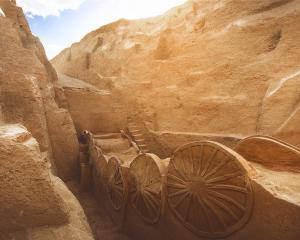I first visited the Crimea 20 years ago. Our ship berthed early in the morning at Yalta, past dolphins doing their acrobatics in the Black Sea. We visited Livadia, the palace of the tsars, and drove up to the mountains that tower over the port city. It is a fascinating place, not least for its archaeology. It was in the caves along the foothills of those uplands that the last Neanderthals encountered we modern humans, and in an archaeological rock shelter called Starosele, both have left evidence of their daily lives, including thousands of bone fragments.
Through a new analytical method known as collagen peptide mass fingerprinting, "Zooms" for short, it is now possible to identify the species of even a tiny fragment of bone and scientists use this to search for human bone. One of the hundreds of Starosele fragments that scientists at the University of Vienna recently analysed comes from a human. It is just under 5cm long, but packed with information.
CT scanning tells us that the fragment is probably from a thigh bone. The first key question posed is, how old is it? Radiocarbon dating has identified that human lived about 45,000 years ago, close indeed to the extinction of the Neanderthals. The next question is, what sort of human? Here scientists turn to DNA results with fingers crossed that any survives. In this case, it has, and the bone comes from a Neanderthal. The DNA even tells us that the Neanderthal who lived at Starosele was closely related to cousins from the Siberian Altai, 3000km to the east. The stone tools made and used at Starosele are a close match in form to those from the Altai.
Climate modellers identified two favourable climatic periods 120,000 and 60,000 years ago during which Neanderthals may have moved between the Crimea, central Asia and Europe along vegetated corridors, perhaps following migrating herds of animals. Zooms tells us that the Neanderthals of the Crimea and the Altai were specialised horse hunters, who also killed the occasional bison. Both animals are adapted to steppe and piedmont habitats.
There was a time when fragments of bone were of little scientific use and were consigned to the too hard basket. No more. This remarkable co-operative research is a prime example of how a tiny fragment of bone can document a distant chapter in the human past.














